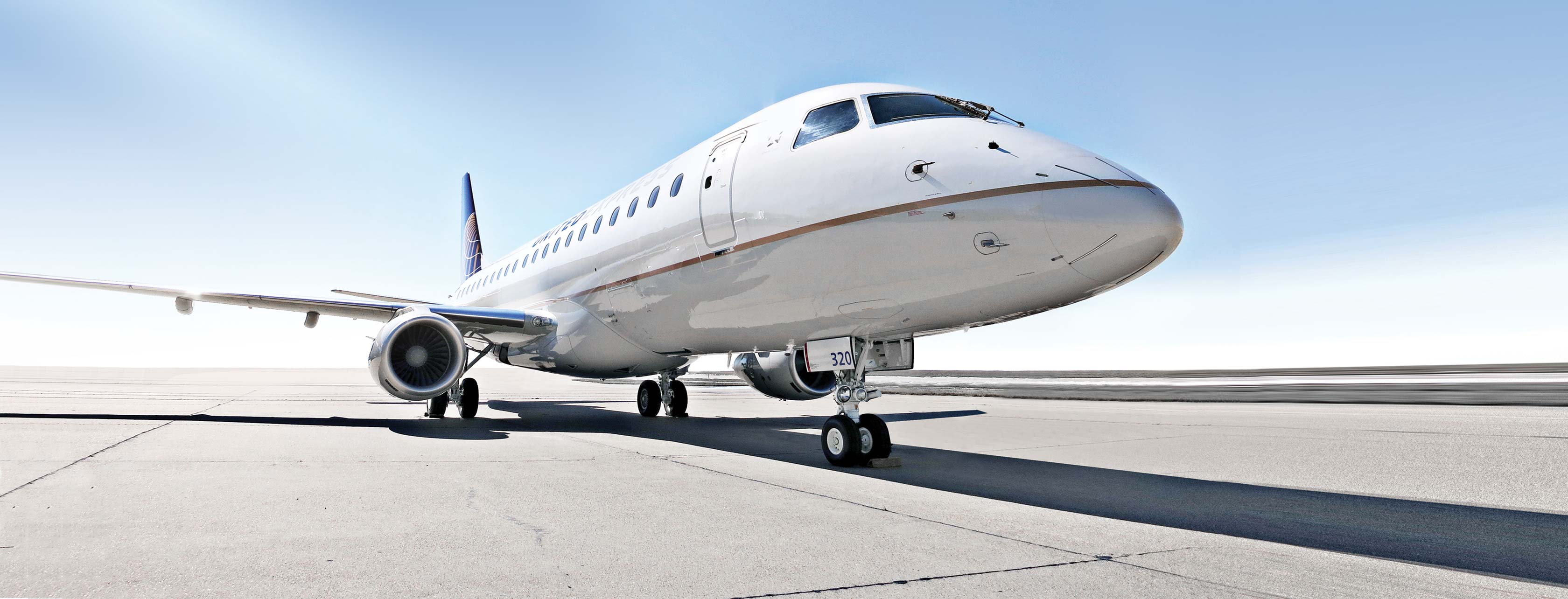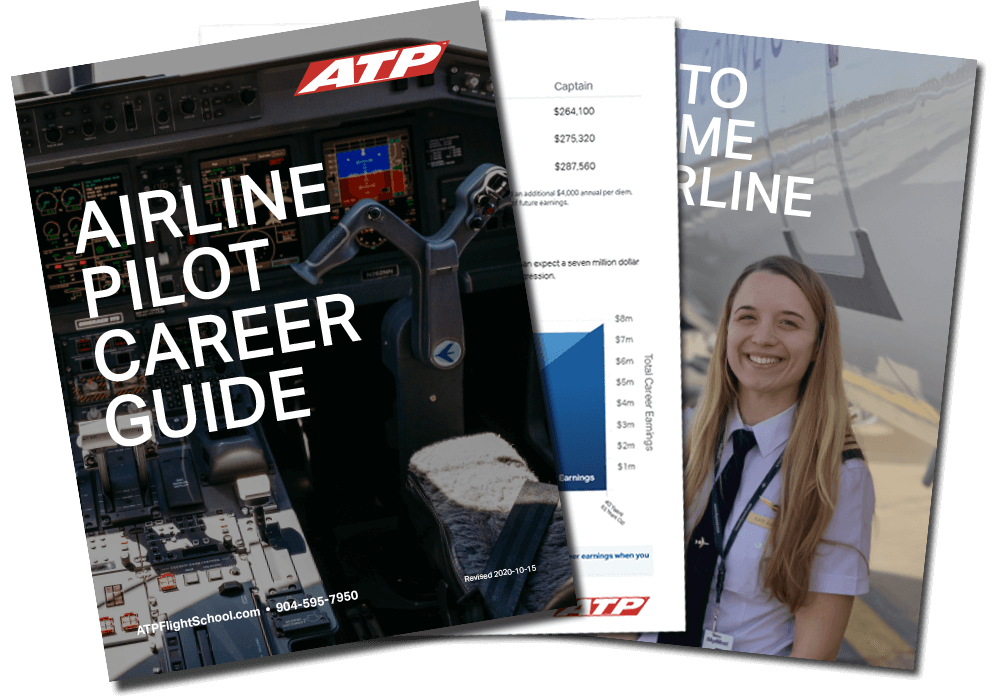 Aircraft manufacturers Boeing and Airbus, whose continued livelihood depends on them being correct about such things, are forecasting that over the next 20 years (2015-2034), global passenger traffic will grow at an average 4.6% a year, driving a need for some 32,600 new aircraft to be added to the global fleet as passenger and freighter fleets will more than double from today’s 19,000 aircraft to 38,500. It will take 10 crews (20 pilots) per airplane to operate them will require 770,000 pilots flying in the industry, many times more than the number flying today.
The growth of the global airline industry looms as large parts of the world catch up to thriving airline markets such as in the United States and Europe. This global demand has foreign airlines coming to the United States to hire our pilots, creating more of a US pilot shortage.
As an example two regional pilots, who both graduated from ATP’s Airline Career Pilot Program and former ATP instructors, have been flying for regional airlines for the last few years. They have both recently been hired by foreign carriers, one by ANA and one by Emirates, to fly 767s and 777s as first officers.
That is a monumental leap in both pilot’s careers and they would not have had that opportunity before the the pilot shortage began. They are both now positioned to seize the opportunities presented to them and one important step they took initially was making the decision to come join the long line of professional pilots who began their careers by training with ATP.
Aircraft manufacturers Boeing and Airbus, whose continued livelihood depends on them being correct about such things, are forecasting that over the next 20 years (2015-2034), global passenger traffic will grow at an average 4.6% a year, driving a need for some 32,600 new aircraft to be added to the global fleet as passenger and freighter fleets will more than double from today’s 19,000 aircraft to 38,500. It will take 10 crews (20 pilots) per airplane to operate them will require 770,000 pilots flying in the industry, many times more than the number flying today.
The growth of the global airline industry looms as large parts of the world catch up to thriving airline markets such as in the United States and Europe. This global demand has foreign airlines coming to the United States to hire our pilots, creating more of a US pilot shortage.
As an example two regional pilots, who both graduated from ATP’s Airline Career Pilot Program and former ATP instructors, have been flying for regional airlines for the last few years. They have both recently been hired by foreign carriers, one by ANA and one by Emirates, to fly 767s and 777s as first officers.
That is a monumental leap in both pilot’s careers and they would not have had that opportunity before the the pilot shortage began. They are both now positioned to seize the opportunities presented to them and one important step they took initially was making the decision to come join the long line of professional pilots who began their careers by training with ATP.
32,600 New Airline Aircraft Coming Now Through 2034
Published Jun 22, 2015 on Pilot Jobs
FREE Airline Pilot Career Guide. — Requirements, Pay, Steps and More. Download Now »
In just over a century commercial aviation has grown from its infancy to making over 32 million flights annually. With the advent of overnight freight carriers and multi-level passenger service the airline grid has become as essential as the electric grid to everyday life as we know it now.
 Aircraft manufacturers Boeing and Airbus, whose continued livelihood depends on them being correct about such things, are forecasting that over the next 20 years (2015-2034), global passenger traffic will grow at an average 4.6% a year, driving a need for some 32,600 new aircraft to be added to the global fleet as passenger and freighter fleets will more than double from today’s 19,000 aircraft to 38,500. It will take 10 crews (20 pilots) per airplane to operate them will require 770,000 pilots flying in the industry, many times more than the number flying today.
The growth of the global airline industry looms as large parts of the world catch up to thriving airline markets such as in the United States and Europe. This global demand has foreign airlines coming to the United States to hire our pilots, creating more of a US pilot shortage.
As an example two regional pilots, who both graduated from ATP’s Airline Career Pilot Program and former ATP instructors, have been flying for regional airlines for the last few years. They have both recently been hired by foreign carriers, one by ANA and one by Emirates, to fly 767s and 777s as first officers.
That is a monumental leap in both pilot’s careers and they would not have had that opportunity before the the pilot shortage began. They are both now positioned to seize the opportunities presented to them and one important step they took initially was making the decision to come join the long line of professional pilots who began their careers by training with ATP.
Aircraft manufacturers Boeing and Airbus, whose continued livelihood depends on them being correct about such things, are forecasting that over the next 20 years (2015-2034), global passenger traffic will grow at an average 4.6% a year, driving a need for some 32,600 new aircraft to be added to the global fleet as passenger and freighter fleets will more than double from today’s 19,000 aircraft to 38,500. It will take 10 crews (20 pilots) per airplane to operate them will require 770,000 pilots flying in the industry, many times more than the number flying today.
The growth of the global airline industry looms as large parts of the world catch up to thriving airline markets such as in the United States and Europe. This global demand has foreign airlines coming to the United States to hire our pilots, creating more of a US pilot shortage.
As an example two regional pilots, who both graduated from ATP’s Airline Career Pilot Program and former ATP instructors, have been flying for regional airlines for the last few years. They have both recently been hired by foreign carriers, one by ANA and one by Emirates, to fly 767s and 777s as first officers.
That is a monumental leap in both pilot’s careers and they would not have had that opportunity before the the pilot shortage began. They are both now positioned to seize the opportunities presented to them and one important step they took initially was making the decision to come join the long line of professional pilots who began their careers by training with ATP.
 Aircraft manufacturers Boeing and Airbus, whose continued livelihood depends on them being correct about such things, are forecasting that over the next 20 years (2015-2034), global passenger traffic will grow at an average 4.6% a year, driving a need for some 32,600 new aircraft to be added to the global fleet as passenger and freighter fleets will more than double from today’s 19,000 aircraft to 38,500. It will take 10 crews (20 pilots) per airplane to operate them will require 770,000 pilots flying in the industry, many times more than the number flying today.
The growth of the global airline industry looms as large parts of the world catch up to thriving airline markets such as in the United States and Europe. This global demand has foreign airlines coming to the United States to hire our pilots, creating more of a US pilot shortage.
As an example two regional pilots, who both graduated from ATP’s Airline Career Pilot Program and former ATP instructors, have been flying for regional airlines for the last few years. They have both recently been hired by foreign carriers, one by ANA and one by Emirates, to fly 767s and 777s as first officers.
That is a monumental leap in both pilot’s careers and they would not have had that opportunity before the the pilot shortage began. They are both now positioned to seize the opportunities presented to them and one important step they took initially was making the decision to come join the long line of professional pilots who began their careers by training with ATP.
Aircraft manufacturers Boeing and Airbus, whose continued livelihood depends on them being correct about such things, are forecasting that over the next 20 years (2015-2034), global passenger traffic will grow at an average 4.6% a year, driving a need for some 32,600 new aircraft to be added to the global fleet as passenger and freighter fleets will more than double from today’s 19,000 aircraft to 38,500. It will take 10 crews (20 pilots) per airplane to operate them will require 770,000 pilots flying in the industry, many times more than the number flying today.
The growth of the global airline industry looms as large parts of the world catch up to thriving airline markets such as in the United States and Europe. This global demand has foreign airlines coming to the United States to hire our pilots, creating more of a US pilot shortage.
As an example two regional pilots, who both graduated from ATP’s Airline Career Pilot Program and former ATP instructors, have been flying for regional airlines for the last few years. They have both recently been hired by foreign carriers, one by ANA and one by Emirates, to fly 767s and 777s as first officers.
That is a monumental leap in both pilot’s careers and they would not have had that opportunity before the the pilot shortage began. They are both now positioned to seize the opportunities presented to them and one important step they took initially was making the decision to come join the long line of professional pilots who began their careers by training with ATP.

